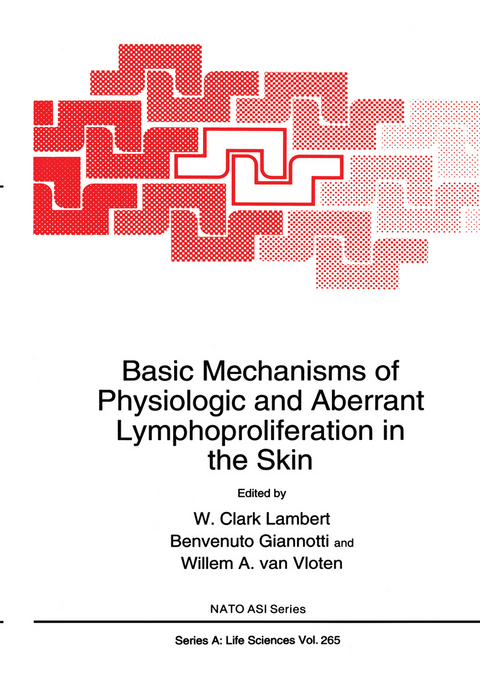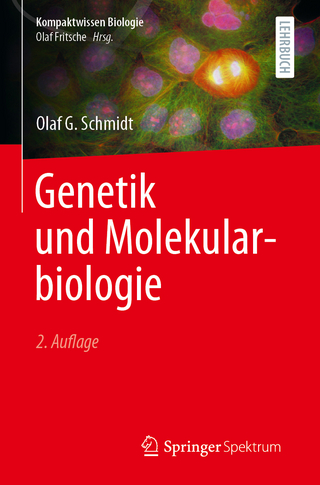
Basic Mechanisms of Physiologic and Aberrant Lymphoproliferation in the Skin
Springer-Verlag New York Inc.
978-1-4613-5756-8 (ISBN)
?-? T lymphocytes in mice and man: A review.- Ontogeny, features and functions of epidermal T lymphocytes.- Activation of reactive versus malignant T-cells in cutaneous T-cell lymphoma: Role of abnormal antigen presenting cells and T-cell activating molecules.- Factors involved in the localization and activation of murine ?-? positive dendritic epidermal T cells.- Morpho-antigenic features of dendritic cells as a clue to the interpretation of skin immune system-related disorders.- Cell trafficking networks in cutaneous T-cell lymphoma.- Cytokine neuropeptide interactions in the skin.- Effect of UV light on cytokine production by epidermal cells.- Adhesion molecules involved in the extravasation of lymphocytes in lymphoid organs and chronically inflamed tissues.- Adhesion receptors in normal skin and cutaneous malignant lymphomas: Pathophysiological and clinical correlations.- Integrins and homing receptors in cutaneous lymphomas.- A new retrovirus from cutaneous T-cell lymphoma.- Survey of cutaneous T-cell lymphomas for human T-lymphotropic virus infection.- HTLV-I proviral sequences in cutaneous CD30+ T-large cell lymphomas.- Presence of Epstein-Barr viral DNA and EBV latent gene products in Hodgkin and non-Hodgkin lymphoma: High expression of EBV-DNA sequences in non-Hodgkin lymphoma with variable numbers of CD30 positive cells.- Inflammatory precursors of mycosis fungoides.- The histological spectrum of cutaneous T-cell lymphoma.- Cutaneous T-cell lymphoma: Clues to diagnosis in early lesions.- Morphologic and prognostic features of advanced mycosis fungoides.- Primary cutaneous CD30 (Ki-1) positive large cell lymphomas: Definition and differential diagnostic aspects.- Analysis of clinical, histopathologic and immunopathologic parameters in erythrodermic variantsof cutaneous T-cell lymphoma with implications for staging.- A scoring system based on differentially weighted criteria for establishing a standardized threshold for the diagnosis of early mycosis fungoides.- Cutaneous B-cell lymphoma: A SALT-related tumor?.- Proliferation activity in skin lesion of mycosis fungoides: Prognostic and pathophysiologic implications.- Erythrodermc actinic reticuloid.- Morphometric study of primary cutaneous germinal center cell lymphomas.- BCL-2 gene rearrangement and protein expression in primary cutaneous B-cell lymphomas.- Changing concepts on cutaneous pseudo-B-cell lymphomas and their relationship to cutaneous B-cell lymphomas.- Diagnostic and prognostic significance of clonal T-cell receptor gene rearrangements in the peripheral blood of patients with cutaneous T-cell lymphoma.- Analysis of T-cell receptor gene configurations in mycosis fungoides.- The pathogenesis of lymphomatoid papulosis.- T-cell receptor variable region gene expression in cutaneous T-cell lymphoma.- Sézary syndrome is characterized by genotraumatic T-cells.- Chromosome abnormalities in cutaneous B-cell lymphomas.- Mechanism for tumor progression in lymphomatoid papulosis: Hypothesis based on studies of tumor cell lines clonally derived from lymphomatoid papulosis.- Shedding of interleukin-2 receptor in cutaneous lymphomas: An effective mechanism to circumvent immunosurveillance?.- The skin as a target organ during IL-2 administration.- Specific immune response against melanoma: Analysis at a clonal level.- Response of early stage cutaneous T-cell lymphoma to ultraviolet B phototherapy.- A murine T-cell lymphoma model showing protection against tumor development and treatment of established disease.- Molecular mechanisms responsible for repair of adducts inducedin human cellular DNA by PUVA.- Interferon modulates lymphoproliferation in the skin.- Use of recombinant interferon-?-2a in the treatment of cutaneous lymphomas of T- and B-cell lineage.- Thymopentin in Sézary syndrome: Clinical and immunological effects.- What is mycosis fungoides? A modest proposal.- Terms and abbreviations used used in cutaneous lymphoproliferative phenomena.- Conference picture.- Index of authors and conference participants.
| Erscheint lt. Verlag | 23.10.2012 |
|---|---|
| Reihe/Serie | Nato Science Series: A ; 265 |
| Zusatzinfo | XII, 651 p. |
| Verlagsort | New York, NY |
| Sprache | englisch |
| Maße | 178 x 254 mm |
| Themenwelt | Medizin / Pharmazie ► Medizinische Fachgebiete ► Dermatologie |
| Studium ► 2. Studienabschnitt (Klinik) ► Humangenetik | |
| Studium ► 2. Studienabschnitt (Klinik) ► Pathologie | |
| Studium ► Querschnittsbereiche ► Infektiologie / Immunologie | |
| Naturwissenschaften ► Biologie ► Botanik | |
| Naturwissenschaften ► Biologie ► Zoologie | |
| ISBN-10 | 1-4613-5756-X / 146135756X |
| ISBN-13 | 978-1-4613-5756-8 / 9781461357568 |
| Zustand | Neuware |
| Haben Sie eine Frage zum Produkt? |
aus dem Bereich


